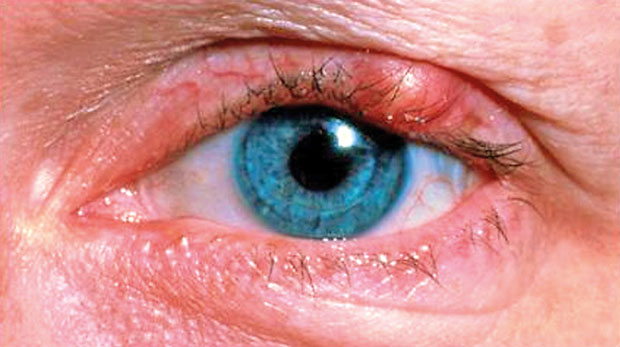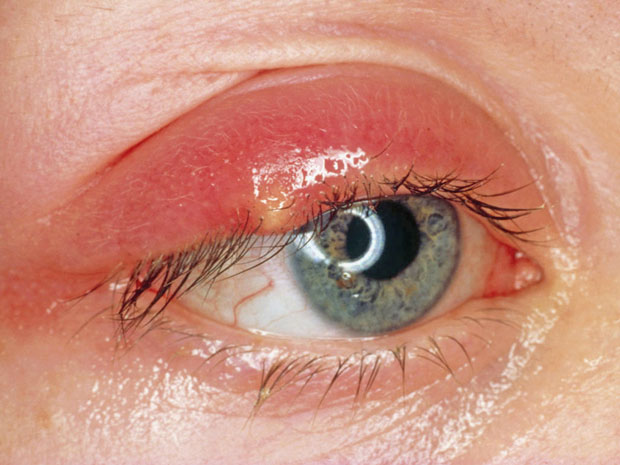14 Aug 2017 - {{hitsCtrl.values.hits}}

 Eyes are very important organs that deserve that extra effort to be taken care of. When considering medical complications related to the eyes, the list includes both harmless to harmful conditions that could even lead to blindness. A very general eye issue that many people face is styes. Dr. M. Wijetunge, retired Consultant Eye Surgeon of the Ragama Teaching Hospital, explained what styes are and provided answers to generally posed questions that spring up in people’s minds in connection with eye styes.
Eyes are very important organs that deserve that extra effort to be taken care of. When considering medical complications related to the eyes, the list includes both harmless to harmful conditions that could even lead to blindness. A very general eye issue that many people face is styes. Dr. M. Wijetunge, retired Consultant Eye Surgeon of the Ragama Teaching Hospital, explained what styes are and provided answers to generally posed questions that spring up in people’s minds in connection with eye styes.
Definition
A stye, also known as a hordeolum, is an infection of an oil gland in the eye lid. A stye is a red, tender bump seen at the edge of the eyelid. A stye could appear either inside or outside the eyelid. “The eyelashes of the eye comprises lash follicles. These follicles contain sebaceous glands. When these glands get blocked and infected, they lead to styes,” explained Dr. Wijetunge. Individuals belonging to any age group can be infected with this infection. Styes can recur in people more than once. In most cases they are harmless and tend to heal taking their own time.
Causes
The usual cause for styes is a bacterial infection. The infection is caused by the bacteria Staphylococcus aureus, but is also triggered by various reasons such as poor nutrition, sleep deprivation, lack of water, improper eye hygiene or rubbing of eyes. “Dusty surroundings, use of eye cosmetics such as eye liners and even dandruff could lead to stye formations in the eyes,”Dr. Wijetunge stressed.

Symptoms
Dr. Wijetunge listed the clear telltale signs of a stye. “A lump on the top or bottom eyelid, localised swelling of the eyelid, pain and redness are common signs of styes,” Dr. Wijetunge said. Others include tenderness, irritation of the eye, light sensitivity, tearing and discomfort during blinking .
Care and treatment
Dr. Wijetunge stated that a stye usually vanishes on its own without any specific treatment. It could last for a few days or weeks. “Warm compressing and gentle massaging of the eye, antibiotic eye ointment or oral antibiotics help treat styes. Cleansing the irritated eye with tap water or mild non-irritating soap such as baby soap is also a step that can be followed. Cleansing must be done gently,” explained Dr. Wijetunge. Proper eye hygiene should be followed. It’s also recommended not to use eye makeup such as eyeliners, etc , when having developed a stye. The use of lotions and contact lenses are also advised against, as they could aggravate the infection and spread the infection to the cornea in some instances.
Prevention
The answer to the stye issue is following proper eye hygiene. Washing hands is very vital, not just to prevent styes, but also to avoid other infections. Applying a warm wash cloth on the eyelids helps reduce the tendency to get infected and thereby prevent the development of styes in the eyes. Through this method the contents of the oil glands of the eyes are kept in fluidity avoiding blockages. “Washing the eyes daily with soap water is a good practice to follow,” advised Dr. Wijetunge. It’s also further recommended to never share eye cosmetic products and tools with others. The removal of makeup every night is advised along with the discarding of old and contaminated eye makeup. Sharing of face towels is a definite ‘no’ as it could spread the infection among individuals. Dr. Wijetunge also mentioned that if a person suffers from dandruff, appropriate steps must be taken to avoid the condition as the use of an anti-dandruff shampoo, as dandruff, could also lead to the formation of styes.
Can it lead to other complications?
Styes are generally harmless, but there are rare cases of complications as well. So if a stye condition doesn’t tend to heal or if the condition worsens in a matter of weeks, it’s advised to seek medical treatment. Large styes have to be drained out as they can hinder vision.The most frequent stye complication is the development of the stye to a chalazion. This condition (Chalazions) often requires surgical removal as it could cause cosmetic deformities and
corneal irritation.
Another possible complication of eye styes is eyelid cellulitis.
23 Dec 2024 2 hours ago
23 Dec 2024 3 hours ago
23 Dec 2024 6 hours ago
23 Dec 2024 8 hours ago